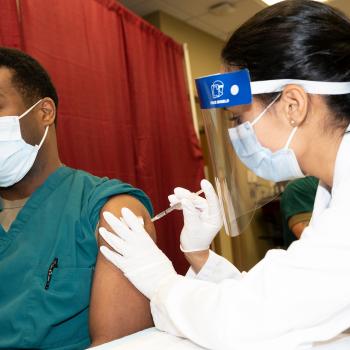Longtime Vox Nova readers will be familiar with my habit of writing about Natural Family Planning from a supportive yet self-critical point of view. I seem to have found a kindred spirit. Over at Roma Locuta Est, Jake Tawney has recently published a post called The Effectiveness of Natural Family Planning. In it he dismantles the idea that NFP is 99% effective.
 Now, before you get your dander up you need to know two things. First of all, Jake is supportive of Church teaching and is, in fact, a certified NFP teacher. Second, you need to have a look at his math. As far as I can tell, he is spot on when he argues that, in practice, NFP is something closer to 67% effective over the full course of a couple’s fertile time together.
Now, before you get your dander up you need to know two things. First of all, Jake is supportive of Church teaching and is, in fact, a certified NFP teacher. Second, you need to have a look at his math. As far as I can tell, he is spot on when he argues that, in practice, NFP is something closer to 67% effective over the full course of a couple’s fertile time together.
This may look somewhat alarming at first glance, but it is important to note that Jake’s observations apply almost as well to artificial methods and that none of them approach the advertised 99% effectiveness either. (I have, in previous posts, suggested NFP is as effective as most other methods, but without resorting to numbers.) In fact, when I give talks to young people I often ask them to put up their hands if they know anyone who got pregnant while using a condom or the pill. Even among younger audiences, a significant number – I’d guess a large minority – of hands go up.
The fact is that both those who would sell you artificial contraceptives and those who would “sell” you NFP are happy with statistical models that give them effectiveness ratings well above what your own empirical experience is likely to indicate. And both can blame poorer than expected performance on “user failure.”
I don’t want to go into this too much more here. Jake does a nice job of it himself and I recommend you go check out his post as well as the comments following it, in which he gives more detail on his mathematical model in response to queries from his readers. His basic conclusion is that we should not use its supposed 99% effectiveness as a selling point, or at the very least not as the primary selling point, of NFP. Such a tactic is bound to backfire when people actually live in the 67% world. Rather, Jake says, we should do it because it is what we believe to be right.
I agree with Jake, but what I do want to do here is take the opportunity to highlight one other reason why I feel that comparing NFP to artificial contraception statistically is not particularly productive. I have noted before that NFP differs from artificial contraception because it consists in, basically, not doing something. Now, from a statistical point of view, it is tricky to compare the effects of not doing something with the effects of doing something.
Of course, NFP can be used to 100% effectiveness. One can totally abstain and one will not get pregnant. But the fact that it is not 100% effective means that the people using it actually do engage in “pregnancy-causing behavior” on occasion. This behavior is, for NFP users, different than for artificial contraception users. Let me try to explain.
AC users are either using AC or they are not. If you didn’t take your pill or didn’t use your condom, then you weren’t using your AC. User failure is very easy to identify. There is no equivalent here for NFP users. There is nothing to point to in order to say, “Oh, we didn’t use our NFP that night.” All that means is that we didn’t abstain (something which the AC users also didn’t do).
But if not abstaining is tantamount to user failure then NFP becomes, by definition, 100% effective! Every single pregnancy is the result of user failure.
No, in order for NFP to be usefully compared to AC in terms of effectiveness rates there must be an equivalent kind of method failure. If NFP is not to be 100% effective by definition there must be cases where people who are absolutely sure of their infertility make love and get pregnant. But is this actually possible? Can you be as certain of your infertility as of the fact that you took your pill consistently or that you are wearing a condom? I think not.
The thing about using NFP is that you are conscious of the fact that, even with the best information you can gather, you are never 100% sure about the state of your fertility. You can be fairly certain, and less certain, but you can’t be 100% sure. You yourself have to decide just how certain you need to be before deciding whether or not to make love. A couple that is in a drastic situation (e.g., if pregnancy threatens the life of the woman) may feel that they are almost never certain enough. But if individual couples have to decide how certain is certain enough for them, how can this be reflected in studies comparing effectiveness rates? I, for one, don’t think it can be.
This means at least two things. First of all, it means that much of the time NFP couples are in a kind of “yellow-light” phase in which they are uncertain about the status of their fertility, a phase that has no equivalent for AC couples. And without such an equivalent, statistical comparisons mean less than they seem to on the surface. Secondly, it means that typical NFP users, unlike typical AC users, are conscious that pregnancy-causing behavior always has the chance of causing pregnancy. Armed with such knowledge, NFP users are much better equipped to deal with method or user failure, no matter how common or rare, than those who have been tricked into believing that sex doesn’t make babies.
Brett Salkeld is a doctoral student in theology at Regis College in Toronto. He is a father of two (so far) and husband of one. He is the co-author of How Far Can We Go? A Catholic Guide to Sex and Dating.












